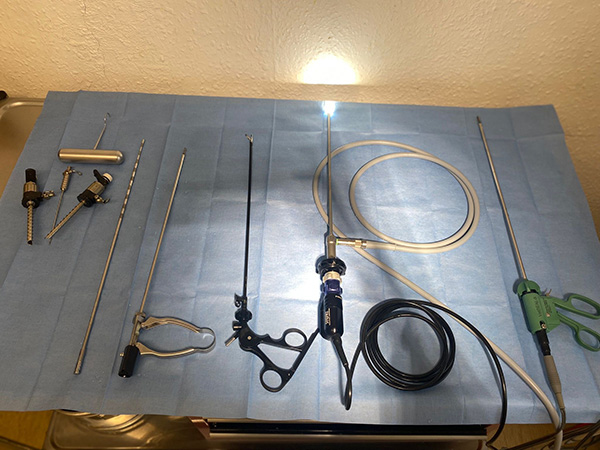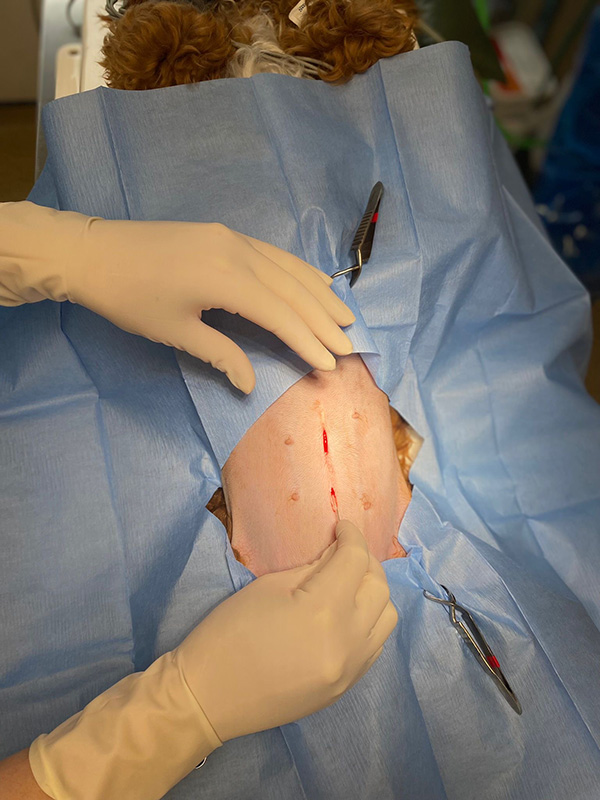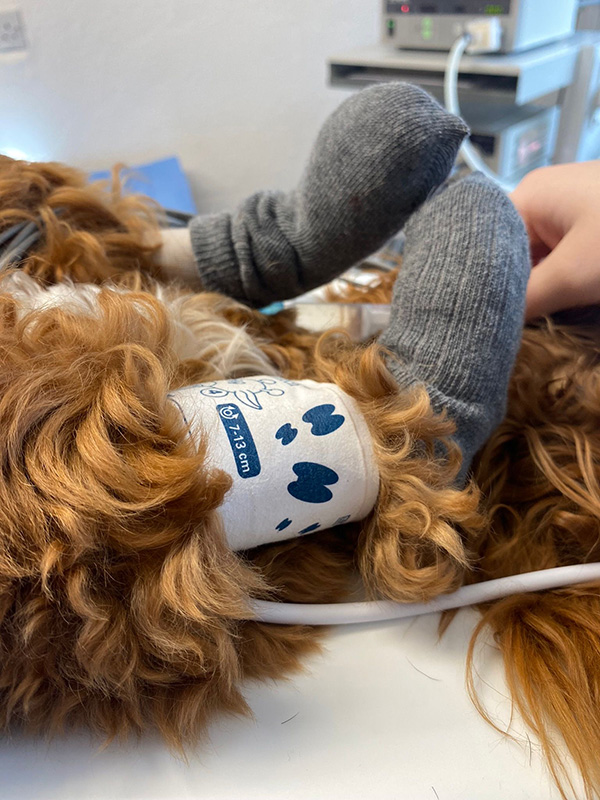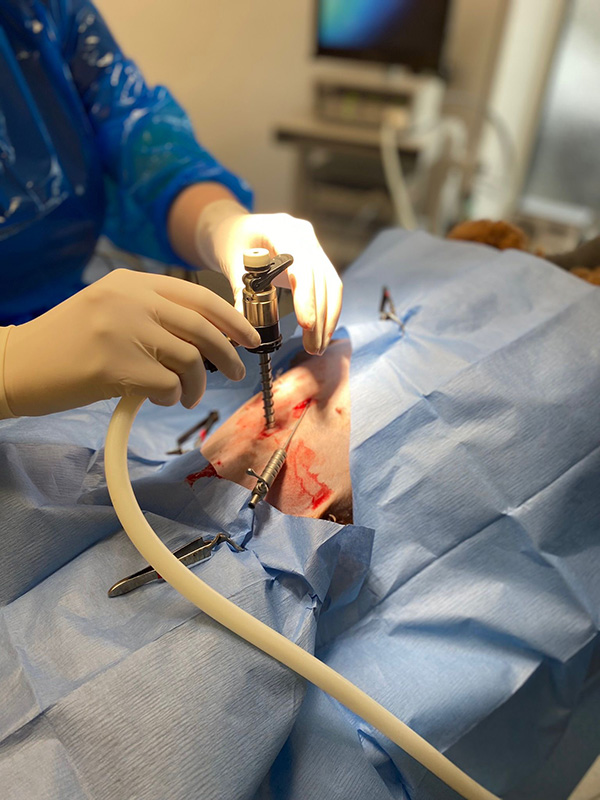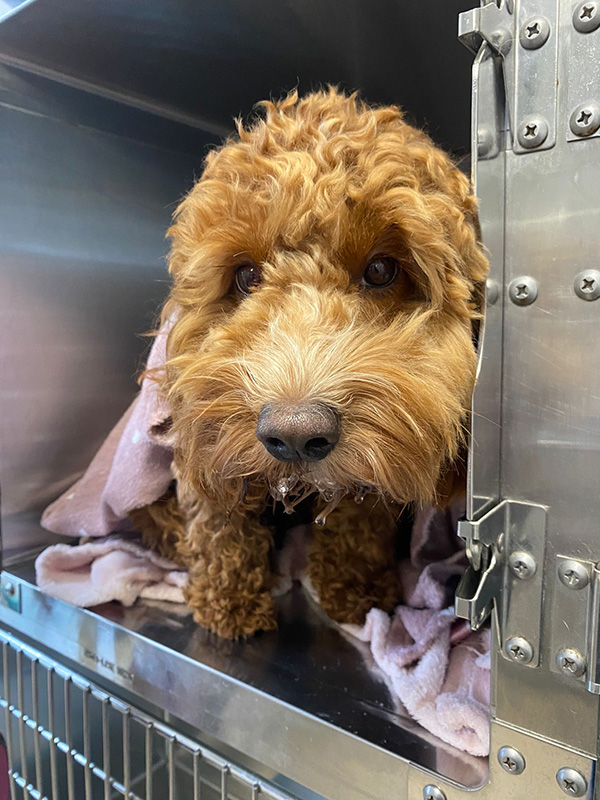Laparoscopic Spay At Longridge Vets
The Modern Way To Spay Your Dog - Less Pain, Faster Recovery
What is a Laparoscopic Spay
Laparoscopic is another word for 'keyhole surgery'. This modern technique has now been developed for use in animals. Our practice has invested in the latest equipment so that we can offer our patients this relatively new technique.
The traditional method of spaying involves making a 10-15cm incision into the abdomen, and through the layers of muscle, from the belly button downwards. Laparoscopic spaying uses just two cuts each approximately 1cm long.
The Procedure
A camera is inserted through one cut and the instruments are inserted through the second cut. The camera magnifies the inside of your dog’s abdomen, allowing our surgeons to see the ovaries in excellent detail. The vessels connected to the ovaries are then sealed, and the ovaries removed.
Why Laparoscopic?
Less Pain ~ This technique causes much less trauma to both internal and external tissues. This means less inflammation (swelling) and less pain during the recovery period.
Quicker Recovery ~ The smaller wounds and small cuts in the muscle results in a quicker healing time. A reduced period of rest is needed after the surgery. Your dog can be back to her normal self, much quicker than using the traditional method of spaying.
What is Removed?
In a laparoscopic spay only the ovaries are removed. Where as in a traditional spay the ovaries and womb are removed. For you dog's long term health removing the ovaries is sufficient. One reason for spaying a dog is to prevent pyometra (pus filled womb) later in life. We are often asked can my dog still have a pyometra if her womb is still there? The answer is no, this is because the problem is caused by the hormones from the ovaries. Removing the ovaries stops the hormone production and therefore the stops the risk of pyometra. As with the pyometra, removing the ovaries reduces the risk of other hormone driven diseases.
When Can My Dog be Spayed?
We can perform a laparoscopic spay in the period from three and a half months after her season finishes up to her next season. This timescale fits with your dog's natural hormone cycle and is the best time for her. We can often be booked up quite far in advance so do call once she has finished her season to book in for three and half month's time. We will also be able to provide an estimate of the cost, which is based on her weight on the day of the operation. If she was to be in a false pregnancy we would not proceed with the spay on that day.
How Long will She be in For?
We admit for surgeries in the morning, usually between 8-10am. This will be confirmed when booking. You will bring her in starved from the night before. However, she can have water in the morning. You will leave her with us for her operation. We usually ask you to call us/we call you in the afternoon for an update. Discharges are most commonly between 15.30 and 17.30 depending on the time the operation took place, and how quickly she wakes up.
What Happens After the Surgery?
At discharge you will be given post-operative care advice. This is tailored to your animal, but is most likely to suggest a light meal that evening, lead walks for 10 days and to keep a collar/suit on until after her post-op check. A collar is included in the cost, however most now prefer the medical jackets (similar to a baby grow!), we can provide one for you for a small additonal cost. You will take home some pain relief if required, though most dogs bounce back from a key hole spay very quickly! Her stiches will disolve over time.
You will be given a post-op review appointment (included in the spay cost) for approximately 10 days after. Don't worry you'll have contact details to phone us if you are at all concerned at any time.
Does Your Practice Do Many Keyhole Spays
Yes! We have now been performing laparoscopic spays for over 8 years and have done more than 1000! These are now the norm in our practice with all our vets doing them daily. We see great results, with very minimal complications compared to traditional spays. Though we are more than happy to do a routine spay if that's what you prefer.
What's the Risk?
All anaesthetics and operations carry a risk. For a fit and healthy dog the anaesthetic risk is very low. There are also some risks of the surgery itself such as infection and stitch irritation/problems. Though the risk compared to a traditional spay is much lower. You'll be provided with full details at admission, and the nurse will discuss these with you.
You're Not My Regular Vet, Can I Bring My Dog for a Lap Spay?
Yes of course! We welcome anyone to our practice. We perform lap spays for dogs from across the North West and beyond. Please call to register and book in on 01772 783327. Please then ask your regular vet to email us your dog's clinical history so that we are aware of any previous or ongoing medical problems. They can send the history to [email protected].
We appreciate that you may be travelling a distance. We are close to the centre of Longridge where there is an abundance of cafes and shops. Alternatively, there are several farm shops and garden centres close by. Plenty to keep you busy whilst waiting for her discharge!

